Objects of 'Limitless Longevity' and 'Double Happiness' at Rago
Apr 11,2019 | 10:00 EDT By Anthony Wu, Asian Specialist
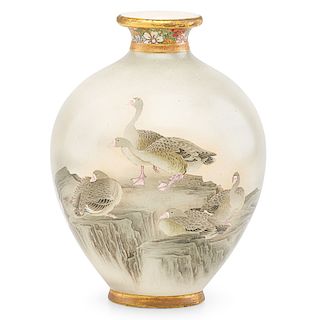
Rago in Lambertville, NJ will be featuring over 900 lots of decorative arts and paintings spread over three sales on April 13 and 14. In addition to their major offering of Asian works of art from the Estate of Hellen and Joe Darion, there is also a strong representation of Asian objects from China, Japan and the Himalayan region in their Remix: Classic + Contemporary auction on April 13. Lot 263, Japanese Satsuma Porcelain Vase; Estimate $7,000-$10,000 One of the highlights is lot 263, a Japanese satsuma vase. Estimated at $7,000-$10,000, this vase has the mark of the prestigious Kinkozan studio, one of the top manufacturers of satsuma wares including Satsuma Lamps & Vases during the late 19th Century. Even though the majority Kinkozan’s works were offered to the domestic market, many major pieces were sold overseas to Europeans and Ameri...Read More
Allie Alvis on Being a Book Historian at the Smithsonian
Apr 10,2019 | 13:00 EDT By Jessica Helen Weinberg
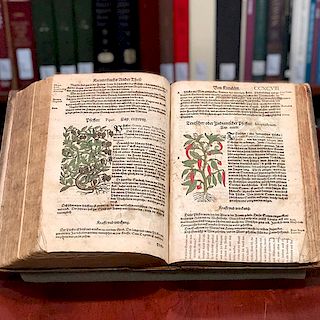
One feels an overwhelming desire to reach out and touch the heavily decorated and fiercely fibrous pages that crop up on Allie Alvis' bibliographic Instagram feed. Each post offers an educational and mostly fascinating peek inside the intriguing world of antique paper, embellished bindings and calligraphic celebrations. Alvis 'Boomerangs' gold leaf manuscripts from the 14th century, reveals hidden fore edge paintings, and points out creative markers left behind by medieval scribes. It's through her Instagram (@book_historia) that the she shares excerpts and close-ups from the Cullman Library and other libraries around the globe. The self-titled, "Pink-haired book historian" is a Reference Librarian for the Joseph F. Cullman 3rd Library of Natural History at the Smithsonian National Museum of Natural History - and it looks like fun. After c...Read More
Spring Into April with Asian Art Results on Bidsquare
Apr 09,2019 | 11:00 EDT By Anthony Wu, Asian Specialist
- Asian Works of Art
- Brunk Auctions
- Leslie Hindman Auctioneers
- Skinner Auctions
- Landscape Paintings
- Vases & Vessels
- Chinese Porcelain Vase
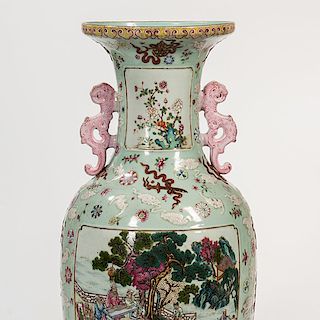
The results are in, and the March Asia Week auctions on Bidsquare featured exceptional prices! Many auction houses including Skinner, Brunk and Leslie Hindman yielded strong results for their Asian works of art from regions including China, Japan, India, and the Himalayas. Chinese art is still the top performer as evidenced by the top pieces sold at Skinner’s Asian Works of Art auction on March 22. The biggest surprise was lot 298, a large cloisonné charger with dragons. Conservatively estimated at $1000-$2000 and with a ‘Ming-style’ attribution, this object realised almost 32 times its low estimate with a realized price of $319,800! Lot 298, Large Cloisonne Charger with Dragons; Sold for $319,800 The large charger is decorated with two confronting dragons in the central scene, all on a sky-blue ground containing floral blooms and Buddhist...Read More
Wedgwood Jasperware: A 10-Point Primer
Apr 04,2019 | 16:00 EDT By Skinner
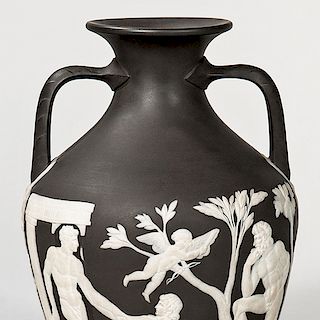
Wedgwood is ripe for collecting with examples manufactured in a variety of bodies, colors and subject matter over 260 years of production. To the novice, Wedgwood is often light blue jasper or perhaps a familiar dinner service from childhood. What they might not realize is the breadth of production or the fact that Wedgwood collectors span the globe. Follow these pointers to learn how to identify Wedgwood and what to look for in this collecting area. Lot 176, Wedgwood Thomas Lovatt Solid Black Jasper Portland Vase; Estimate $2,000-$4,000 1. Quality Look for especially high relief with good undercutting and fine details. This factor is a crucial indicator. Use the pointers below to hone your knowledge and your eye. 2. Marks 18th-century marks include an all lower case mark, a Wedgwood & Bentley mark, and an upper-lower case mark. 19th-cent...Read More
The Importance of the Aesthetic Movement in American Silver
Apr 02,2019 | 14:00 EDT By Rago

Among the most exciting and innovative periods in American silversmithing are the years between 1867 and 1887, a period of creativity in form inspired by the influence of the Aesthetic design movement and the growing interest in all things Japanese that permeated the American consciousness in the late 19th century. The latter of these influences, a byproduct of the forced opening of the U.S/Japan trade at the hands of Commodore Matthew Perry and the American Navy in 1854, spurred the adoption of a distinctly Japanese design sensibility across a wealth of American decorative arts. Lot 1208, Tiffany & Co. Sterling Silver Tea Set; Estimate $6,000-$9,000 At Tiffany, this hunger to capture the Japanese aesthetic was led by its head silver designer, Edward C. Moore, in the latter half of the 1860s. Moore’s designs won a bronze medal at the 1867 P...Read More
Revival at the Remix: All About Oscar Bach
Mar 29,2019 | 14:00 EDT By Jessica Helen Weinberg
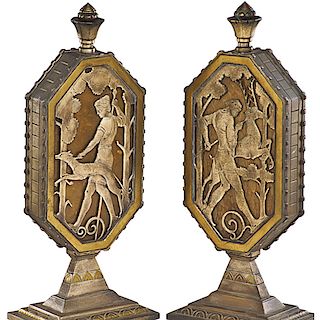
When you enter the lobby of 20 West 34th Street in Manhattan, mountians of grey and white marble, inlaid with bursts of bronze, rise around you in a mighty display of New York iconicism. Directly ahead lies a monumental portrait of the very building in which you stand - the unmistakable, Empire State Building. The lobby mural, aptly done in the Art Deco style, mirroring its contemporary era, as well as the building itself, was designed and installed in 1931 by German born craftsman, Oscar Bach. During the first half of the 20th century, Oscar Bach was one of the most technically skilled and commercially successful artists in the field of decorative metalwork. After all, one doesn't simply land the job of designing the lobby in the world’s most famous skyscraper. On April 13th, Rago will offer 42 pieces by Oscar Bach in their Remix: Classic...Read More
Living The Impossible Dream
Mar 28,2019 | 10:00 EDT By Rago
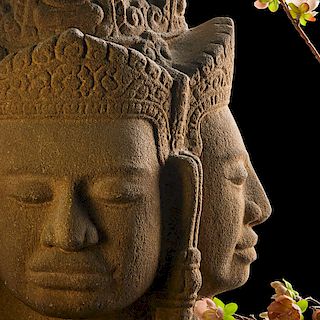
On Sunday, April 14, Rago will offer for sale a selection of property from the Estate of Hellen and Joe Darion, amassed over a shared lifetime spent traveling and collecting art from around the world. Though best known as the lyricist behind the Tony Award winning musical “Man of La Mancha”, Joe Darion and his wife, professional dancer Hellen Darion, were also avid collectors of Indian and Persian manuscripts, Asian decorative objects, and fine art, much of which they gathered during their many adventures across South Asia. Notable examples in the Darions’ collection have been sourced by museums for exhibition and scholars for dissertations. Rago Auctions is pleased to offer bidders the opportunity to purchase art and antiquities from their personal collection, all fresh to market, in a 115 lot auction dedicated to the adventuring spirit o...Read More
Strength and Elegance in Leslie Hindman's Asian Auction
Mar 21,2019 | 12:00 EDT By Anthony Wu, Asian Specialist
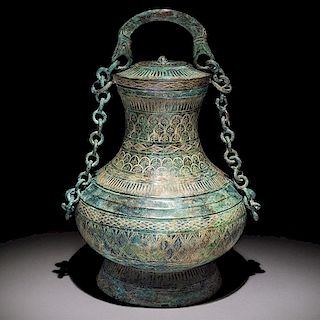
We are just past the halfway mark of Asia Week and there are still many auctions left to go! On March 25, Leslie Hindman Auctioneers in Chicago, IL will be featuring their Asian Works of Art sale. This auction contains over 600 lots, with many of the objects originating from China, Japan, Korea, South East Asia, India, and the Himalayan region. The categories include jade carvings, furniture, porcelains, paintings, bronzes and religious sculptures. This sale is highlighted by a selection of important Chinese bronze vessels from a Chicago collection. One of the major objects is lot 137, an archaic bronze vessel from the Eastern Han Dynasty (25-220). While many of these types of vessels are plain on their exterior, this particular example has a unique design. The body is decorated with lozenges and lappets while the mouth has an incised motif...Read More
Hi-De-Hi-De-Ho: That's One Jazzy Bowl
Mar 19,2019 | 16:00 EDT By Jessica Helen Weinberg
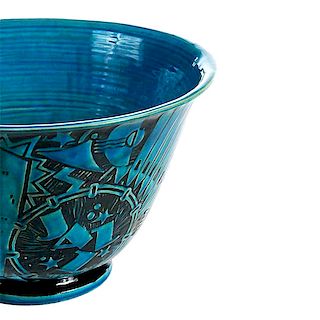
When Times Square first emerged as the preeminent American venue for blinking bulbs and neon signs in the 1920s, the theater and entertainment industry attempted to grow along side the flashy advertisements that lined 42nd street. With the Great Depression looming in the distance and nationwide Prohibition laws buzzing in booze-filled basements, the city known for expressing itself (despite what federal law decrees) was acquiring its first taste for the electric energy that continues to pulse out of New York's mid-town. Brilliant marquee signs and moving marketing - like a giant coffee cup, out of which real steam spewed, and the famous "zipper" that required 14,800 light bulbs to render news headlines - fascinated millions of spectators. Along with the blazing lights of Broadway, New York City had another major draw to match its sky-high a...Read More
The Many Faces of Buddhism
Mar 15,2019 | 13:25 EDT By Anthony Wu, Asian Specialist
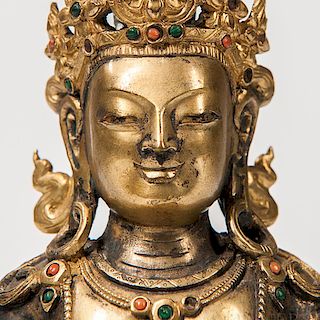
Even though the historical Buddha lived during the 5th Century BCE, his image did not appear in artwork until approximately the 3rd Century AD. This was a slow development that originated in India, and through many centuries, traveled east across the Asian continent along the Silk Road to Nepal, Tibet, China, Japan and Korea. In Buddhist art, the image of the Buddha was the most popular, but there were also depictions of bodhisattvas (a person who has reached enlightenment, but chose to stay on the earth to help others), Buddhist guardians, and spiritual teachers. These images can take the form of sculptures, paintings and relics. Despite bearing the physical attributions of the Buddhist personalities, these objects are simply vessels that aid in prayers and teachings. Buddhist sculptures in particular have an important status within Asian...Read More
- Quilts as a 2025 Design Trend: A Celebration of American Heritage and Craftsmanship
- A Celebration of Sports History and Collectibles
- Antiques and the Arts Weekly Q&A: Allis Ghim
- The Thrill of Sports Memorabilia Auctions: A Collector’s Paradise
- Demystifying Coin Condition: A Guide to the Sheldon Grading Scale
- Snoopy & Friends: A “Peanuts” Auction at Revere
- Colorful Chinese Monochromes at Millea Bros
- 12 Holiday Gifts for the “Impossible to Buy For” on Bidsquare
- Alluring Art Objects and Accessories from the Estate of Chara Schreyer
- Kimball Sterling's One-Owner Outsider and Folk Art Collection Showcases Masters of the Unconventional



 EUR
EUR CAD
CAD AUD
AUD GBP
GBP MXN
MXN HKD
HKD CNY
CNY MYR
MYR SEK
SEK SGD
SGD CHF
CHF THB
THB




